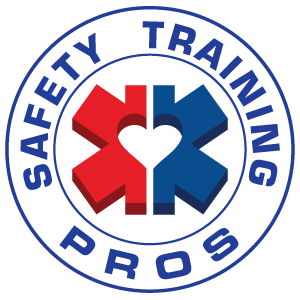Have you ever asked yourself, what is the rationale behind the steps for caring for an unresponsive person with an obstructed airway? The American Red Cross has done a great job of explaining this below.
Since the evidence evaluation process in 2005 with a re-affirmation in 2010 and 2015, the care for a person with an obstructed airway that is (or becomes) unresponsive is to perform CPR. Part of the rationale is based on principles of education and part is based on the science (medicine and physics). From an educational perspective it is easier to learn and remember fewer skills and by teaching trained responders that when a person is unresponsive and not breathing to perform CPR. It simplifies the process and increases the likelihood that a responder will remember (and hopefully) be more willing to act. Because the evidence supports the delivery of chest compressions (chest thrusts) to relieve an obstructed airway, the process of CPR with a slight modification if a breath will not go in is the new standard of care.
I am often asked, “Will the attempt to give a breath push the object further downward?” The general answer is no, but if it does go far enough it may not immediately matter. Air will travel the path of least resistance and when a person becomes unresponsive often the muscles in the airway that may be closed or in spasm when the person is awake will relax allowing an attempted breath to pass by the object and provide at least some oxygen or the object may move or be dislodged when the person is lowered to the ground. The amount of pressure or force to deliver a breath should not be able to move a lodged obstruction, but if it were able to move the object further downward and the object was small enough to pass beyond the vocal cords (the narrowest portion of the airway) it may relieve the complete obstruction or move the object out of the trachea (windpipe) and into most likely the right bronchus allowing air to pass into the left lung (while not ideal, certainly affords time for the problem to be corrected by a healthcare professional).
The other component relates to a person who was unresponsive with an unknown obstruction. If you were unable to ventilate a person initially and felt there was an obstruction and changed the procedure to skip ventilations all together, it could prove to be a critical error. There are several reasons that a trained responder may be unsuccessful providing ventilations, with an airway obstruction being only one and perhaps the least common. Proper opening of the airway and seal are common errors that are correctable and should be attempted when a breath does not go in. Immediately switching to no ventilations would sacrifice the ability to provide oxygen after each set of 30 compressions (30:2 is still considered the standard of care for trained responders over hands-only CPR based on the science (and especially with an airway or breathing cause)).
Are you in need of CPR or First Aid Training? Is it time to get re-certified? Safety Training Pros is the premier safety training experts for individuals, groups, businesses, and government agencies. We provide professional training with high quality safety training materials in an engaging atmosphere so our clients have the life saving skills and knowledge that they need in an emergency. As a Licensed Training Partner of the American Red Cross, ASHI, and Medic First Aid, the leading providers of health and safety training, we can easily and efficiently provide the quality professional training required by all our customers. To speak with a safety expert please call us at 844-900-SAFE or visit us at www.safetytrainingpros.com.
